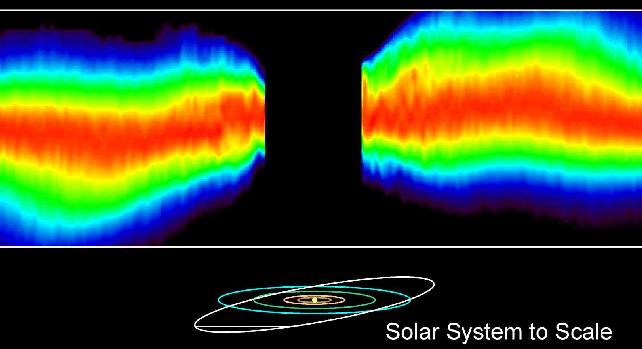Explanation: What did our Solar System look like as the planets were forming? Since the 1980s, astronomers have been pointing toward Beta Pictoris, a young, sun-like star a mere 50 light-years distant, as a likely example. Beta Pic is surrounded by a disk of dust which we view nearly edge-on. The dust disk shines by reflected starlight and has been examined with ever increasing detail to search for signs of planetary formation. The trick is to follow the disk as close in to the star as possible, without being overwhelmed by the direct starlight. To make this Hubble Space Telescope image, a coronagraph was used to block the direct starlight and achieve the closest view yet. The false color picture shows the inner section of the dusty disk to within nearly 1.5 billion miles of the star itself, about the scale of the orbit of Uranus. The obvious warp is indirect evidence that a planet now orbits this young sun, slightly inclined to the disk. The planet's gravitational pull would produce the visible distortion.
1999 2000 2001 2002 2003 2004 2005 2006 2007 2008 2009 2010 2011 2012 2013 2014 2015 2016 2017 2018 2019 2020 2021 2022 2023 2024 2025 |
Январь Февраль Март Апрель Май Июнь Июль Август Сентябрь Октябрь Ноябрь Декабрь |
NASA Web Site Statements, Warnings, and Disclaimers
NASA Official: Jay Norris. Specific rights apply.
A service of: LHEA at NASA / GSFC
& Michigan Tech. U.
|
Публикации с ключевыми словами:
planetary system - circumstellar disk - Протопланетные диски - Планеты у других звезд
Публикации со словами: planetary system - circumstellar disk - Протопланетные диски - Планеты у других звезд | |
См. также:
Все публикации на ту же тему >> | |
